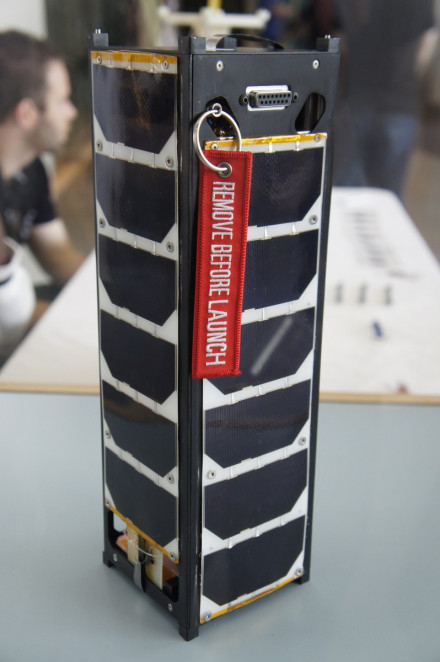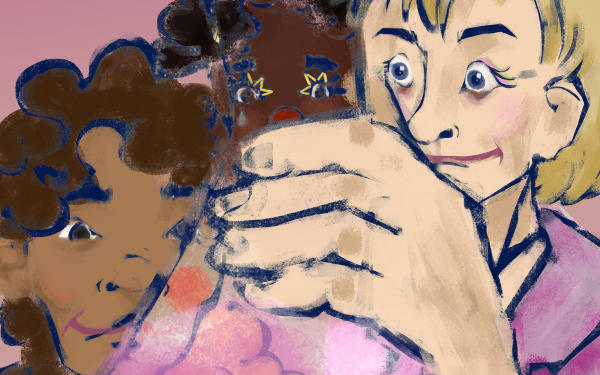On Viral Loads and Satellites
Holy cubes, Batman!
This week: what goes into an award-winning cube satellite, why Samsung doesn’t need Google and why are scientists recreating Parkinson’s disease in monkeys and then defeating it with stem cells?
But first… a “cure” for HIV/AIDS—sort of—in our latest installment of (cue music) WTF moments in Science.
Last week, a major announcement came out of Atlanta about a Mississippi infant who was functionally cured of HIV after it was transmitted from the mother just before birth. The infection was not detected before the mother went into labour, but if it is found earlier in the pregnancy then antiretroviral drug treatment can effectively stop transmission to the child 98 per cent of the time.
The team at the University of Mississippi hospital began treating the baby less than 30 hours after her birth. They upped the ARV dosage from one to three. Like other HIV treatments that come in threes (I’m thinking triple cocktail here) the initiative was much more successful. Within a month, viral load levels in the newborn held such minimal traces of the virus that it was practically undetectable. After the child stopped taking medication for five months her body was still virtually clean of the disease.
Fourteen adults were also announced to be “fundamentally cured” this week|NSNS|2012-GLOBAL|online-news. Early and aggressive treatment with ARVs is being hypothesized as the answer (again, not unlike the triple cocktail in July 1996 in Vancouver). But myself, along with many experts in the medical community, seem to be rather tepid to call this a real cure. Immunologists will tell you that these “cured” individuals still harbour traces of the disease—and that CD4 cells will host the dormant virus for years. Epidemiologists will point out there are multiple strains and substrains of HIV and each has varying tolerances to certain ARV treatments. Some people are entirely immune to such treatment.
Ultimately, while this baby and the other 14 patients can now lead better lives, a lot of false hope was doled out in the process.
Hence thinking, wtf?
But moving on: the smartphone world had its next mini paradigm shift this week with the unveiling of the upcoming Samsung Galaxy S4. Editors over at CNet were able to test drive the phone, and from their remarks it looks like Samsung is pushing its flagship smartphone in the hardware department to maintain its hefty market share. Particularly, the octa-core 1.6 GHz processor in the Asian and European models has been long anticipated. The world’s biggest electronics company also made headway with new software, such as a tracker to stop video when you turn away from the screen—but the advances have some at Tech Crunch wondering if Samsung is planning on replicating what it needs from Android and then doing away with Google alltogether. As open source, Android software has already been appropriated by Amazon and others. Samsung has the weight as a company to try and build up its own Samsung-only apps, though I still think that it will run the generic Android OS for the time being.
In other news: researchers have successfully transplanted neural cells from a monkey’s skin into its brain. The process is rather fascinating, but also gruesome; the researchers created a monkey model of Parkinson’s disease by infusing a lesion to the brains of three monkeys. They then developed adult stem cells known as pluripotent stem cells from the monkeys’ neural cells. The iPS cells were then transmitted into the hosts, changing into a legion of different cells in the brain. Sadly, the monkeys did not get better, yet the researchers are hopeful this practice of using one’s own cells can become standard practice. But three still-sick monkeys is a long way off from personalized medicine.
But anyway.
This week we have have something really special to talk about. Space Concordia, an engineering club at Concordia University, has been kind enough to supply us with details and specs of their soon to be launched satellite: the ConSat-1. It is a CubeSat: a small open source satellite design typically 10cm x 10cm x 10cm—though ConSat-1 is a 3U CubeSat, which is 30cm x 10cm x 10cm. ConSat-1 was entered into the inaugural Canadian University Satellite Design Challenge put on by commercial satellite developper Geocentrix Inc. Space Concordia beat out nine other universities with its plans to explore the South Atlantic Anomaly, an area of intense yet still unexplainable radiation found in Earth’s inner Van Allen belt, discovered in the 1950s. While the CubeSat is still in need of about $14,000 in funding Space Concordia is hoping for an August launch through the European Space Agency.
The satellite utilizes solar panels for power while in orbit, generating 4.9 W BOL, with an expected degradation of 1 per cent per year in space. It is also equiped with a $16,000 Q6 processor card donated by Xiphos Inc. It is the same flight controller that controls the International Space Station. ConSat-1’s main payload is a specialized Geiger–Müller tube to compute ionized radiation levels.
The satellite and its team of engineers will travel to South America for final preparations before launch. In the meantime, a second design team is already building ConSat-2 for the next design challenge. This one has perhaps an even more interesting mission: testing self-healing materials in space.
According to interim student project leader Mehdi Sabzalian, the compound has been used before in car paint to repair scratches. It was created in partnership by Dr. Suong Hoa of Concordia University, MDP Technologies and the Canadian Space Agency.
The plastic-like composite has pellet-like containers inside to repair cell damage. It could be used to shield the ISS from micrometeorites and other space debris.
Winners for the second challenge won’t be announced until 2014, so there is a long time to go before we know whether ConSat-2 will even see liftoff. Until then, if anyone needs me, I’ll be watching home recordings of “Cosmos” with Carl Sagan.
Until next time, folks.
Here’s a fitting space-inspired pick-me-up from famous astrophysicist and world’s greatest laugher Neil deGrasse Tyson:
“I look up at the night sky, and I know that, yes, we are part of this Universe, we are in this Universe, but perhaps more important than both of those facts is that the Universe is in us. When I reflect on that fact, I look up—many people feel small, because they’re small and the Universe is big, but I feel big, because my atoms came from those stars.”
Bitted and spaced like a CubeSat,
Andrew Brennan
—Assistant News Editor


_440_248_90.jpg)
_440_321_90.jpg)
_600_832_s.png)

2_600_375_90_s_c1.jpg)

_600_375_90_s_c1.jpg)